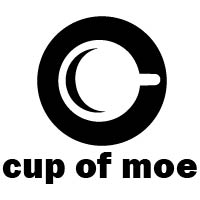We may earn money or products from the companies mentioned in this post.
After a 1984 flop “Dune,” director David Lynch crafts a neo-noir romp in 1986 film “Blue Velvet.” With Lynch at the helm as writer and director, once again teaming up with actor Kyle MacLachlan, the master filmmaker infuses a characteristic style. Buoyed upon strong acting across the board, a meandering narrative, and chock full of symbolism, “Blue Velvet,” is a masterpiece of modern cinema.
University student Jeffrey Beaumont (MacLachlan) returns to his hometown of Lumberton, North Carolina in the wake of his father’s (Jack Harvey) stroke. While walking home from the hospital through a field, Jeffrey finds a severed, decaying human ear. Beaumont brings the ear to the local police precinct where Detective John Williams (George Dickerson) inspects it. Beaumont is reacquainted with Sandy Williams (Laura Dern), daughter of Det. Williams. Sandy overhears her father discussing the case, and tells Jeffrey that there’s a connection between the ear and lounge singer Dorothy Vallens (Isabella Rossellini).
Launching their own investigation, Jeffrey and Sandy are sucked into the seedy underbelly of the seemingly-idyllic Lumberton. Beaumont uncovers a slew of shady characters, with sinister criminal Frank Booth (Dennis Hopper) as the center of the ring. As Jeffrey discovers, Frank has kidnapped Dorothy’s husband and child, forcing Vallens to succumb to his sick desires.
From the onset, “Blue Velvet,” presents an off-kilter universe. Something appears amiss beginning with the opening shot which establishes an all-too-perfect facade with a friendly firefighter waving as a fire truck drives by, school children shuffle by at a crosswalk, and Jeffrey’s father Tom waters his flawlessly-manicured lawn. But underneath the vibrantly green grass, swarms of bugs lie just unseen below the surface.
And this bug motif continues throughout the film. When Jeffrey first meets Dorothy, he masquerades as an exterminator. In the final moments of the movie, a robin alights on a window sill devouring a bug in its mouth. Sandy reveals a dream to Jeffrey: “In the dream, there was our world, and the world was dark because there weren’t any robins and the robins represented love. And for the longest time, there was this darkness. And all of a sudden, thousands of robins were set free and they flew down and brought this blinding light of love. And it seemed that love would make any difference, and it did. So, I guess it means that there is trouble until the robins come.”
The general contrast between light and dark remains consistent throughout “Blue Velvet.” Even cinematography provides a stark contrast with deep blacks challenged by vivid lighting. A few interludes show a flame buffeted in the wind which mimics the way Jeffrey is at once drawn to Sandy, a character embodying pure, unadulterated goodness, and Dorothy, representing Beaumont’s dark desires such as sadomasochism.
Although it’s not a horror film, “Blue Velvet,” oozes a nightmarish quality. At times, the violence and sexual content is tough to watch but not because it’s gratuitous or poorly executed. Rather, the movie intentionally makes the viewer uncomfortable by putting them into the perspective of Jeffrey as he explores his dark fantasies. Often, the camera assumes a first-person perspective, peering through the slatted closet door in Vallens’s apartment, other times presenting as a detached observer. Like Alfred Hitchcock’s “Rear Window,” or Brian De Palma’s Hitchcockian “Body Double,” “Blue Velvet,” at times almost rewards voyeurism.
Acting is top-notch. Kyle MacLachlan plays Jeffrey Beaumont marvelously, crafting a unique character. As Sandy, Laura Dern chisels a wholesome archetype. Rosellini wows as the tortured, physically, mentally, and emotionally, Dorothy Vallens. But Dennis Hopper as the menacing Frank Booth gives a tour de force performance. Hopper creates a convincingly unhinged character that’s at once terrifying and comical.
While the entire movie feels strange, as if viewed through a funhouse mirror, its noir themes provide a much-needed anchor to reality. Jeffrey and Sandy assuming the roles of primary investigators offer a hint of Giallo, with the detective work conducted mostly by non-law enforcement personnel. Despite its excellence, the third act unravels slightly. A sidequest with a party that Jeffrey and Sandy attend is somewhat unnecessary. Plus, the character of Sandy, through no fault of Dern’s, feels underdeveloped and poorly written. Still, a few minor shortcomings fail to detract from the movie as a whole.
An overall masterpiece, “Blue Velvet,” is unlike any other film. Brimming with symbolism, there’s a ton to unpack, thus lending ample replay value. At times, David Lynch’s neo-noir romp is tough to watch, a testament to its prowess and cinematic excellence. Producer Dino De Laurentiis was forced to establish his own distribution company, De Laurentiis Entertainment Group (D.E.G.) since other distribution companies were wary of touching the polarizing motion picture. Remarkable, thought-provoking, and beautifully rendered, “Blue Velvet,” is a cinema treasure.
This post may contain affiliate links. We are a participant in affiliate programs such as the Amazon Services LLC Associates Program, an affiliate advertising program designed to provide a means for us to earn fees by linking to Amazon.com and affiliated sites. However, all products are thoroughly tested and reviews are honest and unbiased.

